OLIVER PARKEN
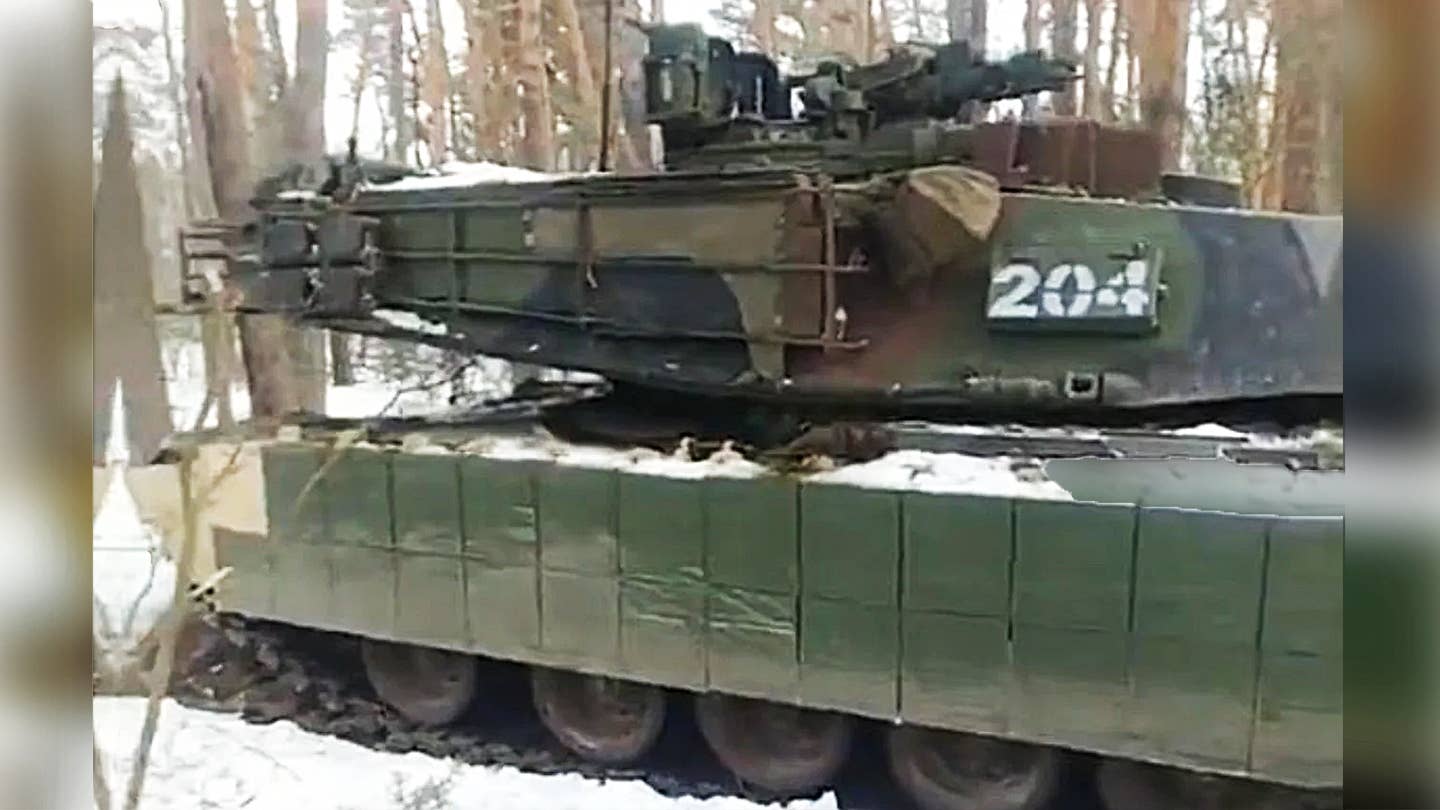
AU.S.-supplied M1A1 Abrams tank in Ukrainian service appears to have been upgraded with explosive reactive armor. The addition of the explosive-filled bricks to the tank's hull, seen in recent video footage and imagery, provides it with extra protection against incoming anti-tank rounds and other weapons.
Visuals of the M1A1 in question began circulating on various social media platforms on January 14. However, The War Zone cannot independently verify exactly where and when the videos and images were captured.
In them, we see the tank sporting M-19 Abrams Reactive Armor Tiles (ARAT) fitted to its hull, with most painted or otherwise covered to match its woodland camouflage, while nestled in a forested area. Various personnel can be seen surrounding the M1A1. As well as views of the explosive reactive armor, we also see close-up angles of the tank from above and inside its turret.
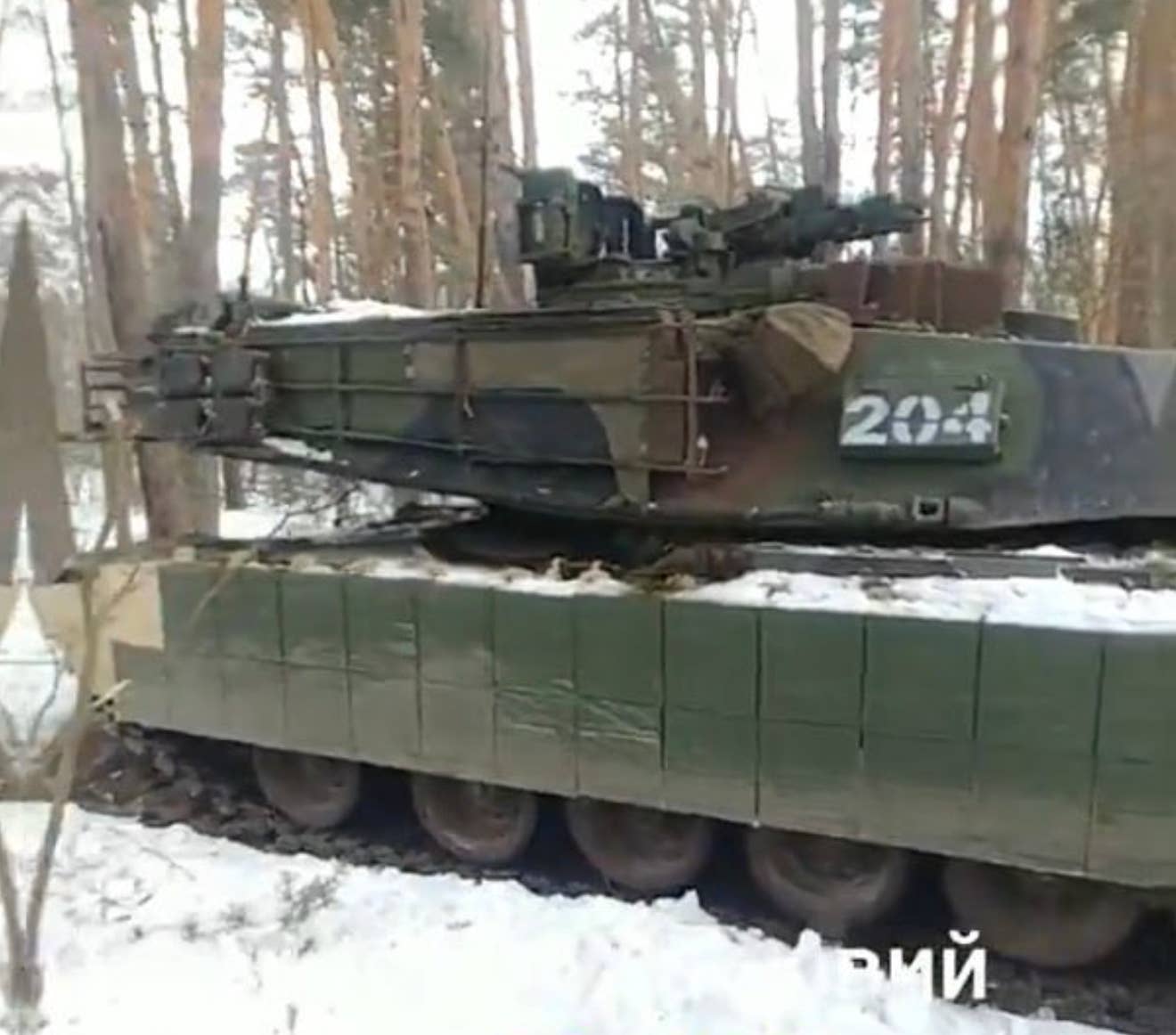
Explosive reactive tiles seen fixed to an M1A1 Abrams.
Explosive reactive armor is designed to explode outward on contact with incoming projectiles, minimizing their impact on the tank's hull or turret underneath. Typically, it works best against penetrating anti-tank munitions like high-explosive anti-tank (HEAT) and armor-piercing rounds, but can help counter other threats including drones.
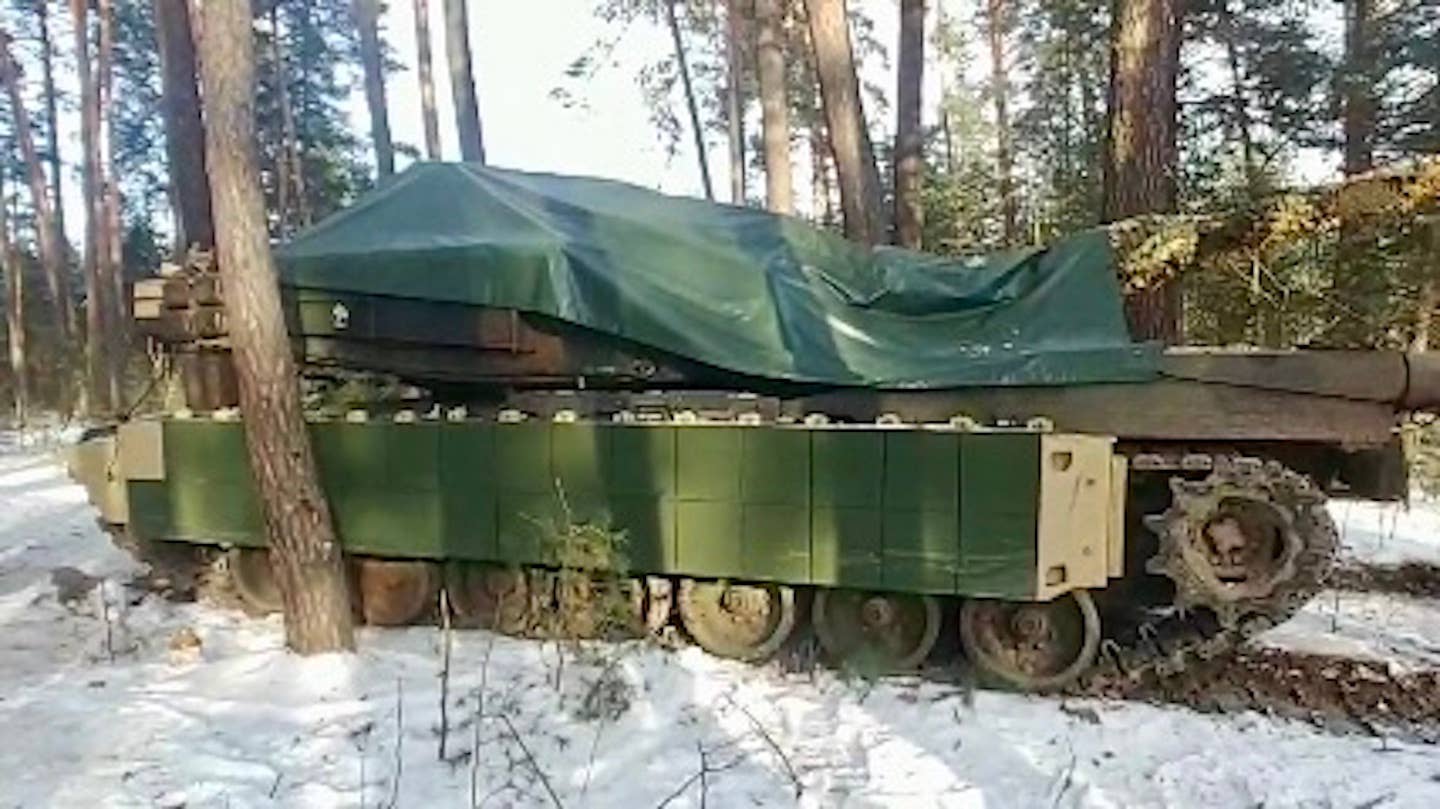
Manufactured by Ensign-Bickford Aerospace and Defense (EBAD), M-19 ARAT bricks constitute a layer of explosive material sandwiched between two metal plates and are easily installed around the M1's hull and/or turret. This allows for different combinations of the explosive bricks to be configured depending on battlefield conditions or specific threat scenarios.
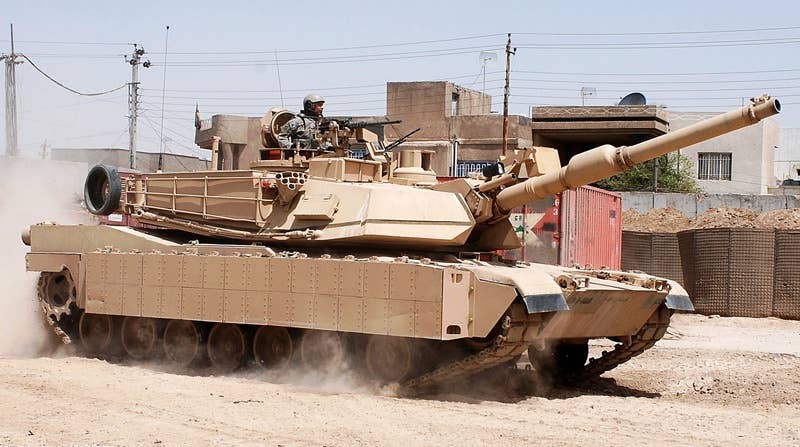
M-19 ARAT bricks seen on the side of an Abrams.
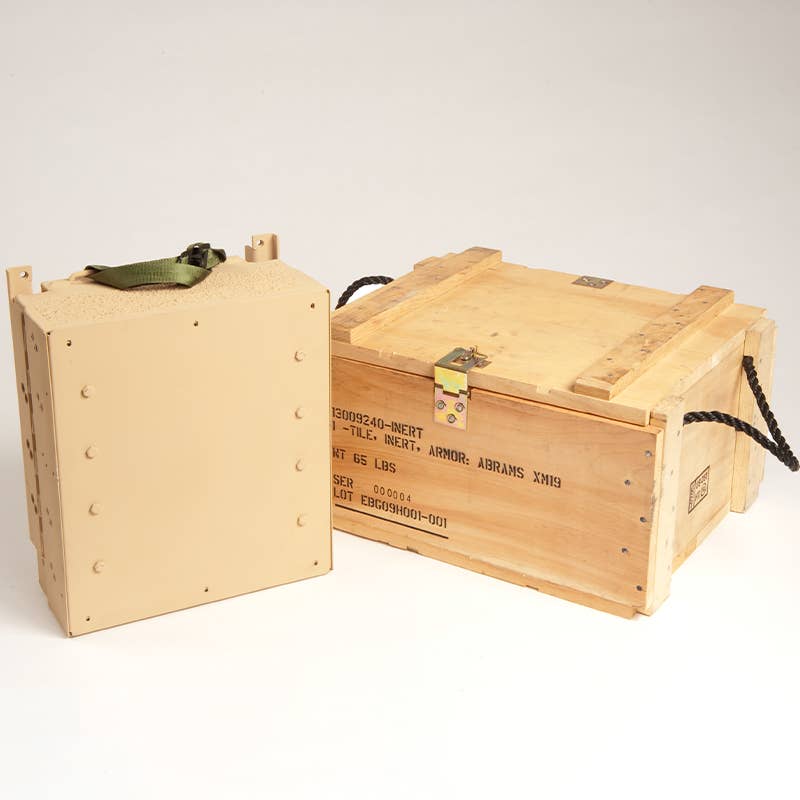
Like other explosive reactive armor, M-19 ARATs work once, and then must be replaced by crews.
The M-19 module has been fielded by the U.S. Army since 2006, in response to the threat of insurgents in Iraq, and forms a key component of the Army's Tank Urban Survival Kit (TUSK). A similar upgrade for the Army's Bradley Fighting Vehicle, the Bradley Urban Survival Kit (BUSK), was also introduced in the 2000s in response to the war in Iraq.
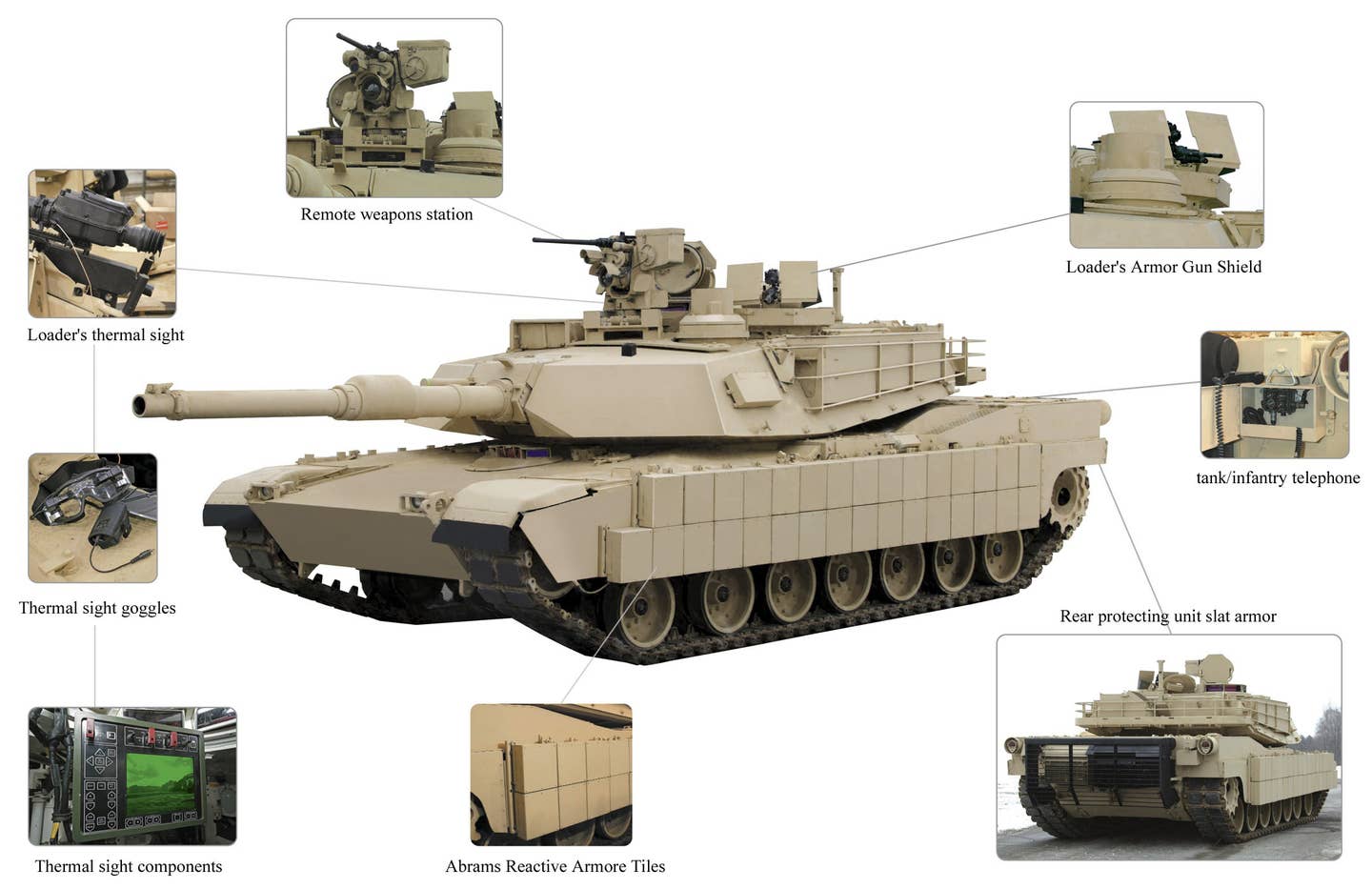
TUSK infographic. U.S. Army
The Tank Urban Survival Kit II, designed for use with M1A2 Abrams tanks, features an additional layer of curved tiles on top of boxy ones. You can read more about that here.
That Ukraine is upping the defenses of at least some of its U.S.-supplied M1A1s follows the equipment of other Western-supplied tanks and armored vehicles with explosive reactive armor in the recent past, often as a result of costly combat experiences. Canadian Leopard "2A4V" tanks have received similar upgrades, for example, as have U.S.-supplied Bradley Fighting Vehicles. ERA is a staple on many Russian/Soviet tanks and are now even used as components 'cope cages' on some of those vehicles.
At present, it's unclear how many of Ukraine's 31 M1A1s have, or will, receive explosive reactive armor. The country received the first of those in September of last year, with that particular variant being chosen to expedite the delivery of M1s to Ukraine over M1A2 types. As of October last year, it was confirmed by a U.S. Army spokesperson that all M1A1s pledged to Ukraine had arrived in the country.
While visuals of the tank in-country have emerged since then, as well as those of an M1 Abrams-based mine-clearing vehicle, the system has remained elusive on the battlefield. You can read more about the M1's utility in the context of Ukraine in this previous War Zone feature.
It will be interesting to see how many of Ukraine's M1s end up receiving explosive reactive armor and how these prized assets will be used on the battlefield, regardless of their armor configuration.
No comments:
Post a Comment